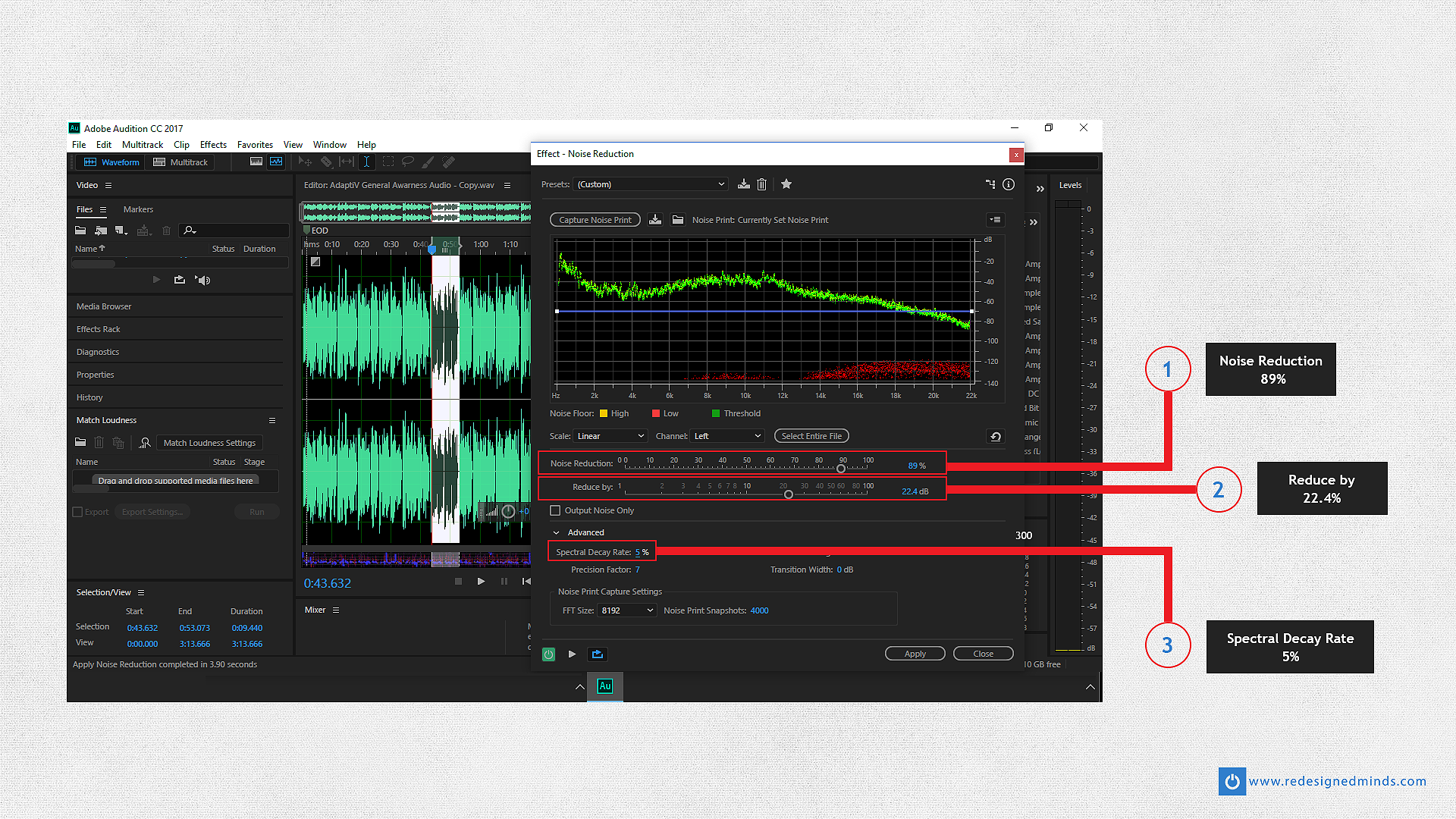

Before pressing “Save,” though, make sure that you have backup copies of your original, unedited sound file. The final step is to save the changes that you have made to your sound file. After normalizing the sound file to -3 dB, our White-crowned Sparrow recording looks like this: This is very easy to do in Audition, which has a convenient “Normalize to -3 dB” command in the Favorites menu. By setting the peak level of your recording to -3 dB, you’ll be creating a sound file that is consistent with the thousands of sound files archived in the same way at the Macaulay Library. Returning to our White-crowned Sparrow example, we now have a sound file that looks like this:Īfter trimming the ends of the sound file, the next step is to normalize the recording so that the loudest sound from your target species reaches a level of -3 dB. So, we will instead create a shorter buffer that ends immediately after the Chestnut-sided Warbler song, creating a clean one-second buffer before the first Black-and-white Warbler song: If we included a three-second buffer in this case, the loud songs of the other two warbler species could create confusion for a listener. However, the prominent songs of two other warbler species (Mourning Warbler and Chestnut-sided Warbler) occur shortly before the Black-and-white Warbler song: In the sound file below, the target species, Black-and-white Warbler, begins singing near the 11-second mark: In some cases, it is not possible to create a clean three-second buffer immediately before the first target sound. In our White-crowned Sparrow recording, there are about three seconds of additional audio that we will delete:Īfter trimming the beginning of your recording, go ahead and do the same thing at the end of your recording-look for the last sound from your target species, include a three-second buffer of ambient sound after that sound, and then trim any additional audio after the buffer. But if there is any additional audio before the buffer, go ahead and delete it.

In a case like this, you should include this three-second buffer of ambient sound in the final sound file that you upload to eBird. Looking at the waveform of this recording, we see that the three seconds that are highlighted are “clean audio,” with no recordist noise or prominent, potentially confusing background species.

The first step is to listen to the recording, find where the first sound from the target species occurs, and then highlight the three seconds immediately before that sound: Below is a single sound file, without any pauses, with six songs from a White-crowned Sparrow: If you have a single sound recording that you’d like to upload to an eBird checklist, it can be prepared in just a few easy steps. With this approach, using the “Save” function will just make changes to a file that you have specifically designated for editing purposes.

To deal with this issue, the Macaulay Library recommends keeping two copies of your original sound files (one on your computer and another on an external hard drive), and then making edits to a third copy. Audition is a destructive editing program, which means that if you edit a file and then use the “Save” function, the file will be permanently altered to reflect the changes that you made.
#ADOBE AUDITION VOICE OVER TUTORIAL HOW TO#
Continue on for a step-by-step demonstration of how to edit recordings for upload, or check out our series of tutorial videos.
#ADOBE AUDITION VOICE OVER TUTORIAL SOFTWARE#
Adobe Audition is a subscription-based paid software that works well for editing audio recordings for submission to eBird and the Macaulay Library.


 0 kommentar(er)
0 kommentar(er)
